Keep in mind that there are many different climate models and that different models make different predictions about the future. The reason is that no model can fully represent all the complex process and feedbacks involved in the Earth system. Due to this uncertainty, we should consider all of them as possible outcomes of adding greenhouse gases.
The ability of global climate models to reproduce the observed surface temperature trends over the 20th century represents an important test of the models (see examples below). While most climate models are able to reproduce the slight warming in global average surface temperature that has been measured since 1860, no model is able to correctly get the spatial patterns of temperature changes correct.
Various modeling studies have suggested that a doubling of atmospheric carbon dioxide, or its equivalent by incorporating the effects of increases in other greenhouse gases, will rise mean global temperatures between 1.5 and 4.5°C. Climate scientists generally agree that if the Earth's atmosphere contained two times the amount of carbon dioxide as it did prior to the industrial revolution, then the Earth's average surface temperature would be 2.5-3.5°C warmer than pre-industrial times.
You must understand that these studies were done by doubling carbon dioxide, then letting the model run until a new equilibrium climate state was reached. In reality, the increases in greenhouse gases happen over an extended period of time and the climate system takes some time to come into equilibrium.
A big issue here is that the warming in surface temperatures tends to lag behind the increase in greenhouse gases. To a large degree, this lag is due to the large thermal inertia of the oceans -- in other words it takes a lot of energy to raise the temperature of the ocean water.
Let me try to break it down into understandable steps.
As a result of the delay induced by the oceans, climate
scientists do not expect the Earth to warm by the full
1.5-4.5°C (3-8°F) by 2060, even though the level of CO2 is expected to have doubled by that time.
We can make several conclusions here.

Currently, the Intergovernmental Panel on Climate Change (IPCC) projects a warming of 1.0-3.5°C (1.8-6.3°F) in global average temperature by the year 2100. This estimate is based on the latest runs of what are considered to be the best global climate models AND the most accepted estimates of future emissions of greenhouse gases. Keep in mind that we are never certain of future emissions of greenhouse gases, so often various emission senarios are run by modeling groups.
Directly below are a few figures that illustrate the global warming projections of one of the global climate models run by the Hadley Centre for Climate Prediction and Research (jointly funded by the United Kingdom Department of the Environment and the United Kingdom Meteorological Office).
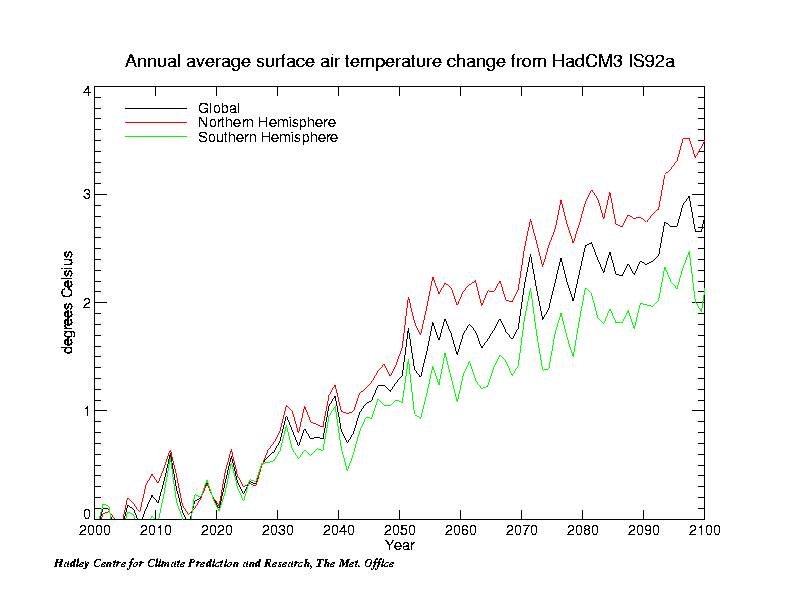
|
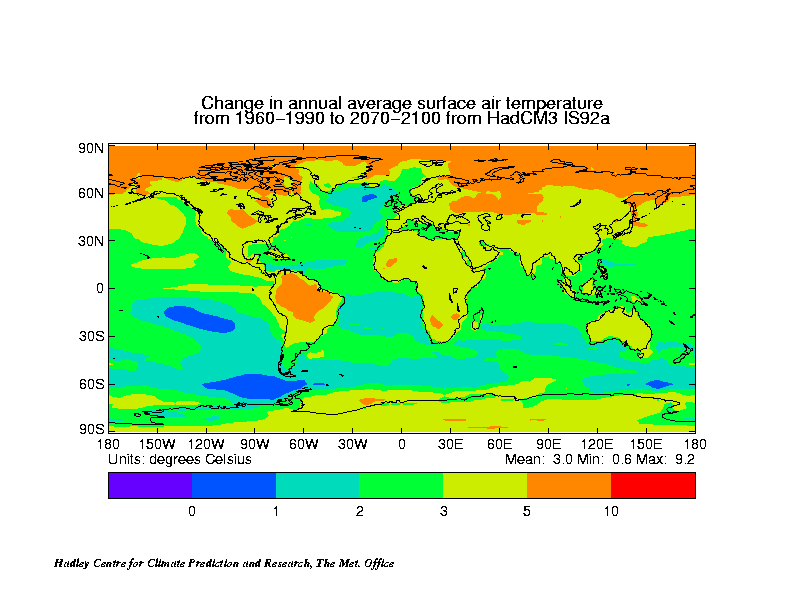
|
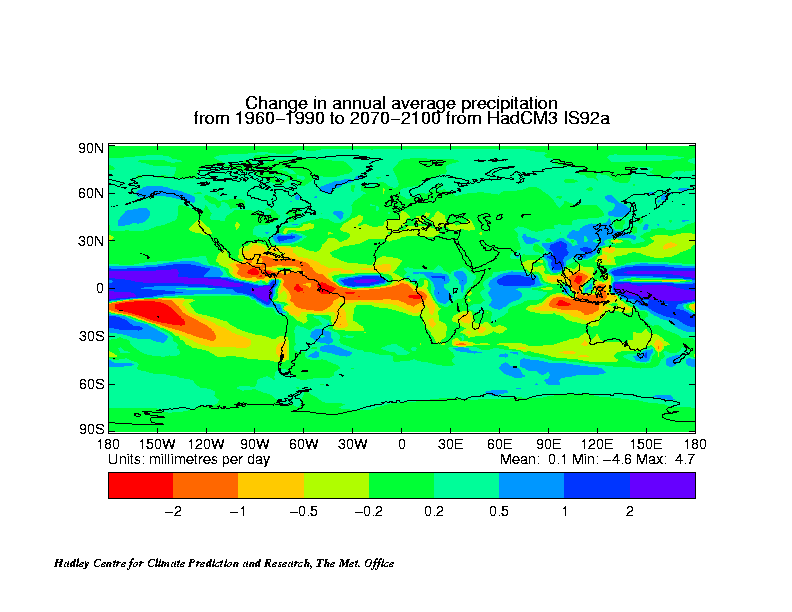
|
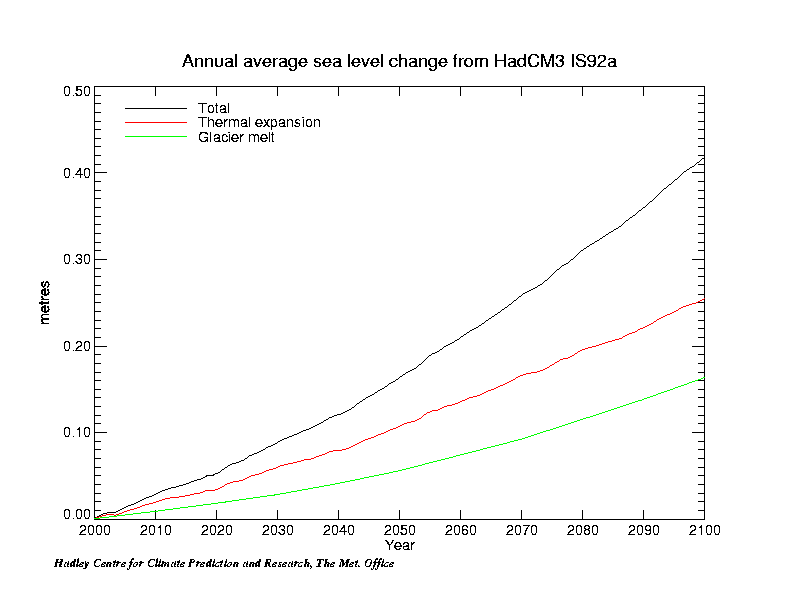
|
Below is the projected from four different global climate models. Note the rather large differences between the various models in their prediction of the increase in global average surface temperature over the next 100 years or so. If you were to compare the regional changes in temperature predicted by each of these models, you would see even greater differences among them.
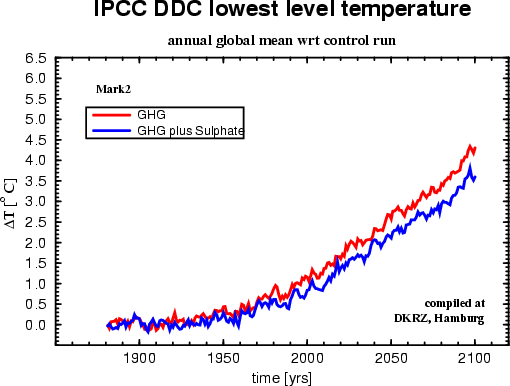
| 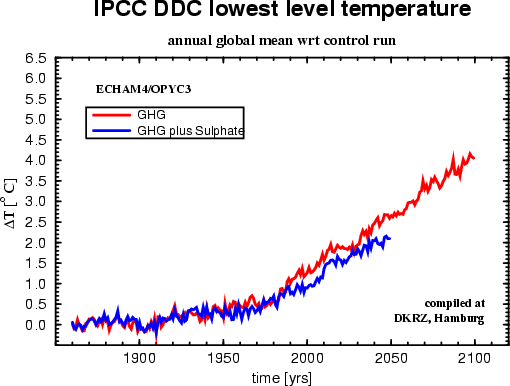
|
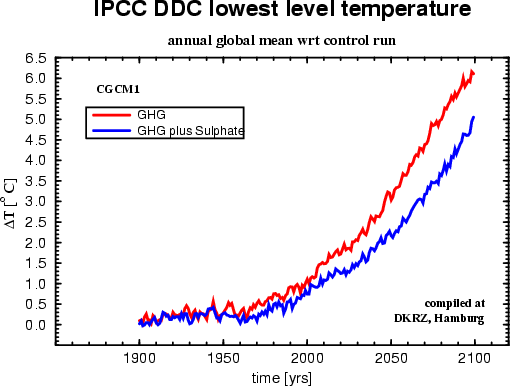
| 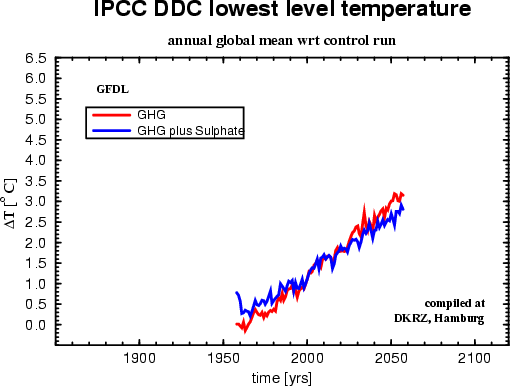
|
Recall when we started this section on global warming and climate change, it was pointed out that the frequency and intensity of extreme weather events is probably more influential on the types of plants and animals that can survive in a given ecosystem than the average conditions. Therefore, any changes in the distribution of extreme events is an extremely important thing to monitor and predict.
Predicting the distribution of extreme events is a very difficult problem for climate models to answer. For one, extremes are by definition rare, which makes statistical conclusions far more difficult to draw. Another reason is that the wildest weather is often confined to areas that are smaller than global climate models can predict (typical horizontal resolution of climate models is about 150 km). In a sense this is just a re-statement of the problem mentioned above: climate model projections are quite uncertain over small regional scales.
Because predicting and monitoring changes in the distribution of extreme weather events is so important to our understanding of the effects of global warming and climate change, research groups working with climate models are beginning to look at this issue. The following 10 indicies for extreme weather have been identified as target issues for climate prediction models:
Currently, we have low confidence in the ability of climate models to accurately predict the above indices. Hopefully, with lots of hard work, scientists can improve climate models to better answer the important question: how will the distribution and intensity of extreme weather events change in response to human activities?